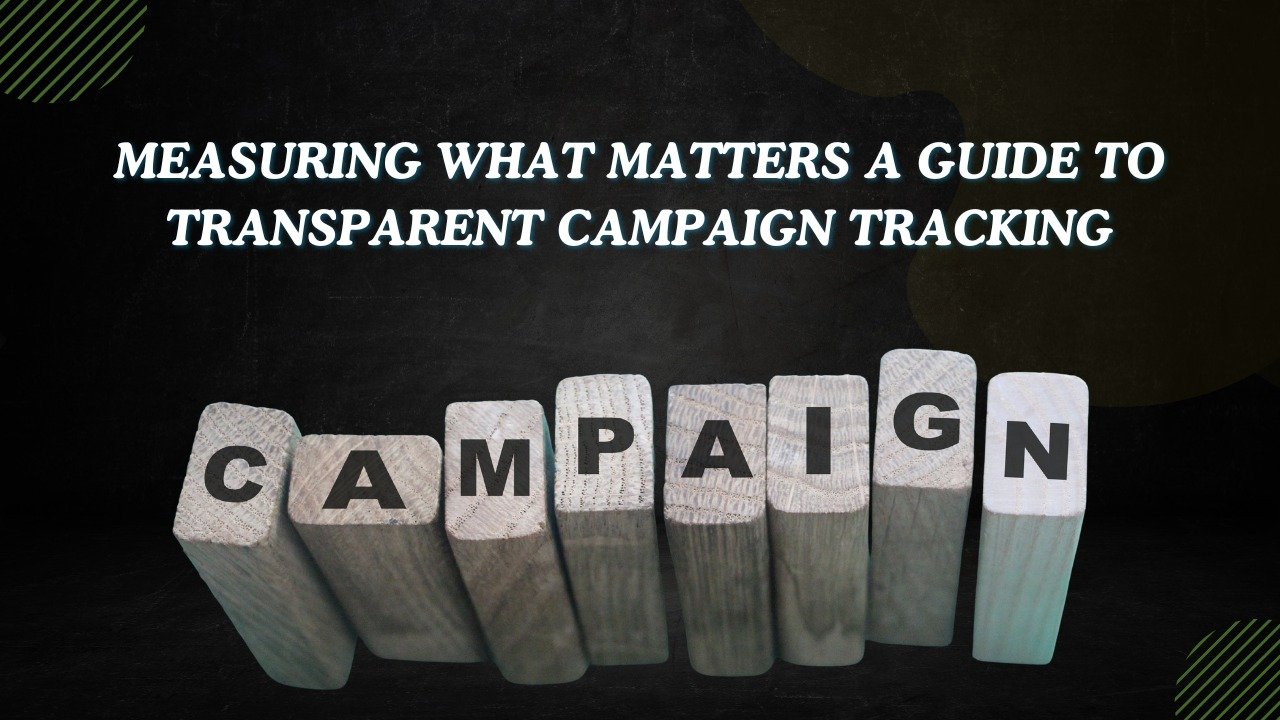Measuring What Matters: A Guide to Transparent Campaign Tracking

Let’s paint a familiar picture. You’ve just launched a new marketing campaign. The creative is brilliant, the copy is sharp, and you’ve pushed it live across multiple channels. A week later, someone asks the dreaded question: “So, how’s it performing?”
You scramble. You pull up a dashboard filled with numbers—likes, shares, impressions, clicks. You talk about “increased brand awareness.” But deep down, you’re left with a nagging feeling. Are these numbers telling the whole story? Is this campaign actually driving business, or just generating digital noise?
If this sounds like you, you’re not alone. Many businesses are data-rich but insight-poor. The problem isn’t a lack of data; it’s a lack of transparent and meaningful data.
This guide is your roadmap out of the fog. We’re going to move beyond vanity metrics and build a system for transparent campaign tracking that tells you exactly what’s working, what’s not, and why.
Why “Impressions” Are Impressing No One: The Vanity Metric Trap
Vanity metrics are like empty calories. They look good on the surface but provide no real nutritional value for your business. Think:
- Likes & Follower Count: Easy to inflate, hard to connect to revenue.
- Impressions: Just because your ad was served doesn’t mean it was seen or remembered.
- Pageviews: A high number means nothing if visitors leave in 3 seconds.
The goal of transparent campaign tracking is to connect your marketing activities directly to business outcomes. It’s about shifting the conversation from “We got 100,000 impressions!” to “Our campaign generated 50 qualified leads at a cost of £20 each.”
Laying the Foundation: Your Pre-Campaign Tracking Checklist
Transparency starts before you launch. A little preparation prevents a lot of confusion later.
1. Define Your ONE Primary Goal
Every campaign must have a single, primary North Star. What is the one thing you want this campaign to achieve? Be brutally specific.
- Not this: “Increase sales.”
- This: “Generate 50 new sign-ups for our ‘Advanced Web Design’ course.”
2. Map Your KPIs to Your Goal
Your Key Performance Indicators (KPIs) are the signposts on the road to your goal. Choose 2-3 that directly reflect progress.
- If your goal is Lead Generation: KPIs are Cost Per Lead (CPL), Number of Qualified Leads, and Form Completion Rate.
- If your goal is E-commerce Sales: KPIs are Return on Ad Spend (ROAS), Conversion Rate, and Average Order Value (AOV).
3. Implement Rock-Solid Tracking
This is the technical bedrock of transparency. Ensure your tracking is set up correctly:
- UTM Parameters: These are simple tags you add to your campaign URLs. They tell Google Analytics exactly where your traffic came from (e.g., utm_source=facebook&utm_medium=paid_social&utm_campaign=spring_sale). Use a tool like Google’s Campaign URL Builder (external link) to create them easily.
- Conversion Tracking: Set up goals in Google Analytics and the pixel/meta tag for platforms like Meta Ads and LinkedIn. This is non-negotiable. It’s how you see which ad click led to a purchase or sign-up.
- Google Analytics 4 (GA4): Make sure you’re comfortable with GA4’s event-based model. It’s powerful for tracking specific user interactions.
The Transparency Framework: What to Track Across Your Funnel
A transparent campaign view means understanding the entire customer journey, not just the final click.
Top of Funnel (Awareness) – Tracking Reach & Engagement
Here, you’re building brand awareness. The metrics matter, but context is key.
- Track: Reach, Impressions, Video Completion Rate, Social Shares.
- Ask: “Is this campaign effectively introducing our brand to the right people at a reasonable cost?” (Look at Cost Per Thousand Impressions – CPM).
Middle of Funnel (Consideration) – Tracking Intent & Nurturing
Now, you’re nurturing interest. This is where lead quality becomes critical.
- Track: Click-Through Rate (CTR), Cost Per Click (CPC), Time on Site, Pages per Session, Cost Per Lead (CPL).
- Ask: “Are we attracting genuinely interested people, and are they engaging with our content?”
Bottom of Funnel (Conversion) – Tracking Action & ROI
This is where the rubber meets the road. Transparency here is about directly connecting spend to revenue.
- Track: Conversion Rate, Cost Per Acquisition (CPA), Return on Ad Spend (ROAS), Customer Lifetime Value (CLV).
- Ask: “Is this campaign generating a positive return on investment? What is the actual cost to acquire a customer?”
Your Secret Weapon: The Campaign Dashboard
Data scattered across 10 different platforms is not transparent. The single most powerful thing you can do is create a centralised campaign dashboard.
This doesn’t need to be a complex, expensive tool. A well-organised Google Sheet or Data Studio dashboard can work wonders. It should display, at a glance:
- Spend: Total budget and spend per channel.
- Key Performance Metrics: Your pre-defined KPIs (Leads, Sales, ROAS).
- Efficiency Metrics: CPA, CPL, CPC.
- Channel Breakdown: How each platform (Facebook, Google, Email) is contributing.
This dashboard becomes your single source of truth, eliminating arguments over whose data is correct and fostering honest, productive conversations about performance. For a deeper dive on this, our guide to building a marketing KPI dashboard can help. (Internal Link)
The Human Element: Cultivating a Culture of Transparency
The most advanced tracking in the world is useless without a culture that embraces honest data. This means:
- Celebrating Learning, Not Just Winning: A campaign that “fails” but provides clear, actionable insights is not a failure. It’s expensive market research.
- Sharing Results Widely: Don’t hide reports. Share performance—the good and the bad—with relevant teams. Transparency builds collective ownership.
- Asking “Why?”: Always dig deeper. If the CTR is high but conversions are low, why? Is it the landing page? The audience targeting? The offer itself?
The Bottom Line: Trust is Your Greatest Asset
Transparent campaign tracking does more than just optimize your budget. It builds trust—with your CEO, your finance team, and yourself. It transforms marketing from a “cost centre” into a measurable, accountable growth engine.
When you can clearly articulate, “We invested £5,000 in this campaign and it returned £15,000 in revenue,” you are no longer just a marketer; you are a strategic business leader.
Ready to move from guessing to knowing? At ARSL, we believe in data-driven decisions and radical transparency. We help our clients build the tracking frameworks and dashboards that turn marketing efforts into measurable business success.



